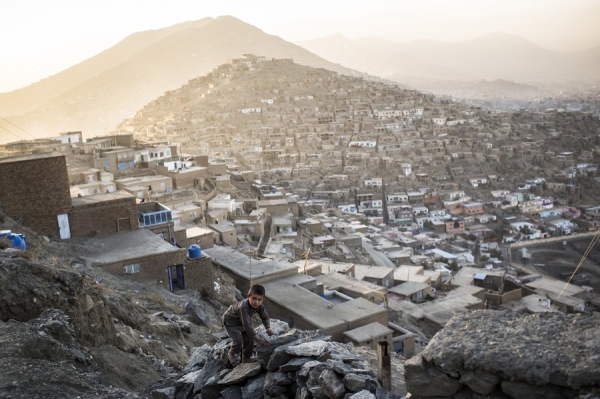Following the publication of the United Nations Secretary-General's report on Children affected by Armed Conflict (CAAC) for the year 2019, the Global Protection Cluster (GTC), a network of organizations engaged in protection activities in humanitarian crises, has identified actions through which to enable the effective implementation of the recommendations in the above-mentioned report. The aim of GTC's contribution is to suggest ways for humanitarian actors, and specifically the Humanitarian Country Team (HCT), to operationalize the UN report to reduce the threats faced by children during conflict.
Afghanistan has been engaged in a conflict for over 40 years. This has conferred it the title of the deadliest country on the planet for children. Internal divisions and power distribution issues have led to severe political, economic and social instability. According to the GTC report, children are the most vulnerable to war damage, especially the indirect damage caused by explosive remnants of war left on the ground or improvised explosive devices.
With the arrival of the COVID-19 pandemic in February 2020, the situation in the country worsened, with the virus fueling insecurity and malaise in the population. Severely affected were repatriated children, who faced discrimination and rejection from their community following the death of their parents from COVID-19, and isolation to prevent the spread of the virus. According to the Country Task Force on Monitoring and Reporting (CTFMR), children subjected to discrimination due to the virus are more vulnerable to recruitment by the parties in conflict. This is strongly linked to the isolation that these children have to face, which prevents their access to education, health care, livelihoods and social services.
The report suggests six actions that would effectively support the UN Secretary General's recommendations. First and foremost, mine clearance is one of the main risk factors for children. The report argues that humanitarian, development and peace actors need to work together to strengthen existing mechanisms for risk education and the removal of landmines and explosive remnants of war, thus extending the scope of protection. Further action to be taken entails the swift implementation of the Protection of Children's Rights Act 2019, which protects children from exploitation. This requires the HCT members to work to ensure its legitimacy, establish stronger monitoring mechanisms and facilitate the translation of its provisions into regulations, policies and action plans to be applied in the current context. In addition, to ensure greater Government commitment to preventing serious violations of children's rights by its armed forces, the GPC suggested that the UN raise awareness and support the Government to take measures to reduce the detention of children in conflict, as well as deaths and maiming, and the bombing of schools and hospitals. Moreover, in order to make the respect of children's rights by both the government and the Taliban effective, it is crucial to include child protection in the peace process. To this end, the GPC suggests that actions be taken to strengthen the existing protection system and to create a more structured and transparent one, capable of adopting long-term solutions. One of the last points of the report relates to the Secretary-General's recommendation to stop the use of improvised explosive devices and complex attacks. To do this, it is important that the UN coordinates its work with the Taliban Commission for the Prevention of Civilian Casualties in order to strengthen dialogue and establish stronger accountability structures.
Finally, the Secretary-General recommends the reintegration of children separated from parties to the conflict, released or rejected from recruitment centres. Actions identified to make this recommendation effective include joint work between the UN and the Government to establish a framework for the reintegration of children.
However, despite the commitment of humanitarian actors and the significant progress made in ensuring greater protection of children by both the Afghan government and the Taliban, there are still many steps to be taken. According to the Global Protection Cluster report, the current peace process needs to focus on peace-building and social cohesion in order to effectively ensure the protection of children within the agreements.
To know more, please read:
Author: Francesca Mencuccini; Editor: Carla Leonetti




